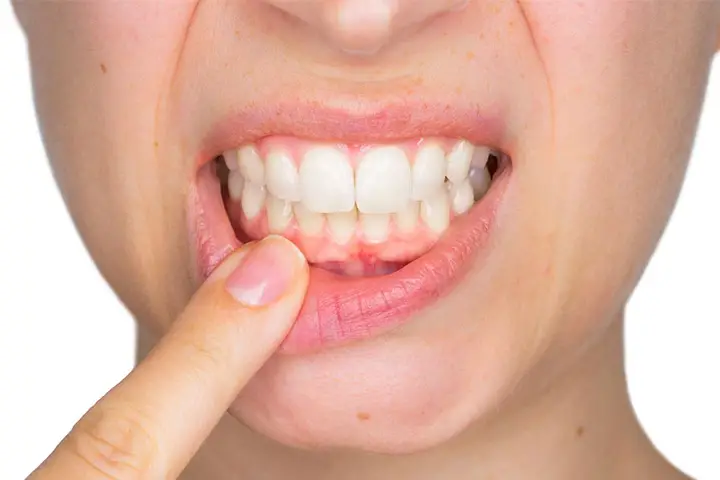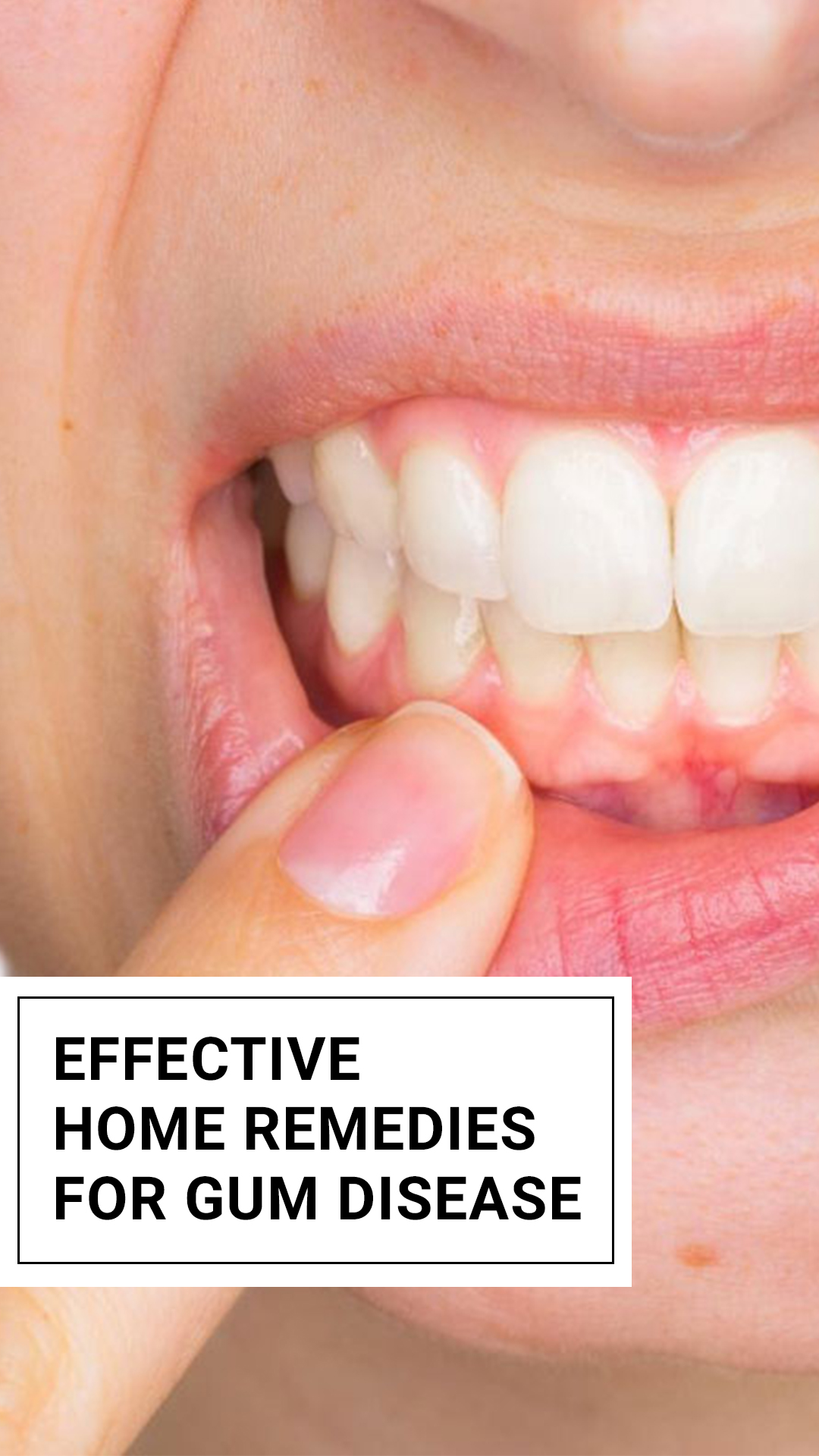
Important: This article is for informational purposes only. Please read our full disclaimer for more details.
Gum disease affects 20%-50% of individuals worldwide. It is not only painful to deal with but is also of cosmetic concern among many as gum disease often leads to tooth loss if treatment is not availed promptly. How can you manage this condition? Will home remedies be of any help? Continue reading to find out.
Article Contains
Gum Disease Causes
One of the primary causes of gum disease is the build-up of plaque, a sticky film that coats your teeth and contains bacteria. Other factors that could contribute to the development of gum disease include:
- Hormonal changes
- Medical conditions like cancer, HIV, and diabetes
- Anticonvulsant medications like Dilantin and anti-angina drugs like Procardia and Adalat
- Smoking or chewing tobacco
- Poor oral hygiene practices
- A family history of dental diseases
Natural Remedies to Fight Gum Disease
Gum disease is a generally used term for periodontal disease or periodontitis. It is caused by bacterial growth in the mouth, and if not treated on time, it can also result in tooth loss due to the destruction of the surrounding tissue. Gum disease is almost always preceded by gingivitis or inflammation of the gums. However, not all cases of gingivitis lead to gum disease.
If not treated on time, gum disease can cause severe toothache and other oral issues like cavities. And before you know it, your teeth may begin to fall out. It is, therefore, best to avail medical treatment immediately if you are dealing with severe cases of gum disease. However, mild to moderate cases of gum disease can be easily managed and even reversed using a few all-natural remedies.
1. Oil Pulling
Oil pulling with coconut and sesame oils can be used to treat gum disease as it can help in reducing plaque build-up and inhibiting oral bacterial growth.
You’ll need:
- 1 tablespoon of coconut or sesame oil
Process:
- Swish a tablespoon of coconut or sesame oil in your mouth for 10-15 minutes.
- Spit the oil and carry on with your usual oral routine.
- You may do this once daily, preferably every morning before brushing your teeth.
2. Hydrogen Peroxide
Hydrogen peroxide can reduce plaque and oral bacterial growth, which can assist in the treatment of gum disease.
You’ll need:
- 1 tablespoon of 3% hydrogen peroxide
- ½ cup of water
Process:
- Add a tablespoon of 3% hydrogen peroxide to half a cup of water.
- Mix well and use the solution to rinse your mouth for a few seconds.
- You may do this once daily, preferably right after brushing your teeth.
3. Aloe Vera

Aloe vera gel can help in improving the symptoms of gum disease when applied topically or used as a mouth rinse. This improvement could be due to its potential anti-inflammatory and antimicrobial activities.
You’ll need:
- An aloe vera leaf
- Water (optional)
Process:
- Extract the gel from an aloe vera leaf.
- Whisk it a little with a fork.
- Apply the gel to the periodontal pockets or inflamed gums.
- Leave it on for 5-10 minutes and rinse it off with water.
- You may also blend the aloe gel with water and use it as a mouth rinse.
- You can do this 1-2 times daily.
[ Recommended: Home Remedies for Wisdom Tooth Pain Relief ]
4. Green Tea

Green tea is a rich source of catechins like epigallocatechin-3-gallate (EGCG). EGCG helps in treating gum disease by reducing inflammation of the gums and limiting bacterial growth in the mouth.
You’ll need:
- 1 teaspoon of green tea
- 1 cup of hot water
Process:
- Add a teaspoon of green tea to a cup of hot water.
- Steep for 5-7 minutes and strain.
- Allow the tea to cool a bit.
- Use a straw for drinking the tea.
- You can drink green tea two times daily.
Note: Green tea contains caffeine, which may stain your teeth in the long run. Hence, do not consume it more than two times daily.
5. Baking Soda
Baking soda (sodium bicarbonate) exhibits bactericidal and anti-inflammatory properties that help in reducing plaque and gingivitis. Hence, it can also help in the treatment of gum disease.
You’ll need:
- 1 teaspoon of baking soda
- 1 cup of water
Process:
- Add a teaspoon of baking soda to a cup of water.
- Mix well and use it as a mouth rinse daily.
- You may do this 1-2 times daily.
[ Recommended: How To Take Care of Yourself After a Tooth Extraction ]
6. Guava Leaves
Guava leaves display antibacterial activities against oral bacteria and also help in the reduction of plaque. These properties can help in improving the symptoms of gum disease.
You’ll need:
- 1-2 guava leaves
Process:
- Cut the guava leaves into small pieces.
- Chew on them for 30-60 seconds and spit it out.
- Rinse your mouth thoroughly with water.
- You may do this 1-2 times daily.
7. Warm Salt Water
Rinsing your mouth with salt water is an effective way to treat gum disease as it can help reduce plaque and bacterial growth in the mouth.
You’ll need:
- 1 teaspoon of table salt
- 1 cup of warm water
Process:
- Dissolve a teaspoon of table salt in a cup of warm water.
- Mix well and use the mixture to rinse your mouth.
- You may do this 2-3 times daily.
Try out the above remedies along with the diet and management tips and let us know how it worked for you. These remedies can help you manage gum disease to a great extent. However, not all of them are safe for kids as there is a risk of swallowing.
Also, Read:
- How To Get Rid Of Cavities Using Baking Soda
- Can You Eat After Whitening Strips?
- How to Use Hydrogen Peroxide Safely to Whiten Teeth
- 10 Unexpected Side Effects of Blood Thinners
- How to Treat Bleeding Gums: 10 Home Remedies to Try
- What Happens When You Don’t Brush Your Tongue
- Cavity In Between Teeth: Causes, Symptoms and Treatments
- How to Whiten Teeth with Coconut Oil?
- Turmeric And Honey : Health Benefits, Preparation and How to Take
- Top 10 Simple Home Remedies for a Tooth Abscess
















